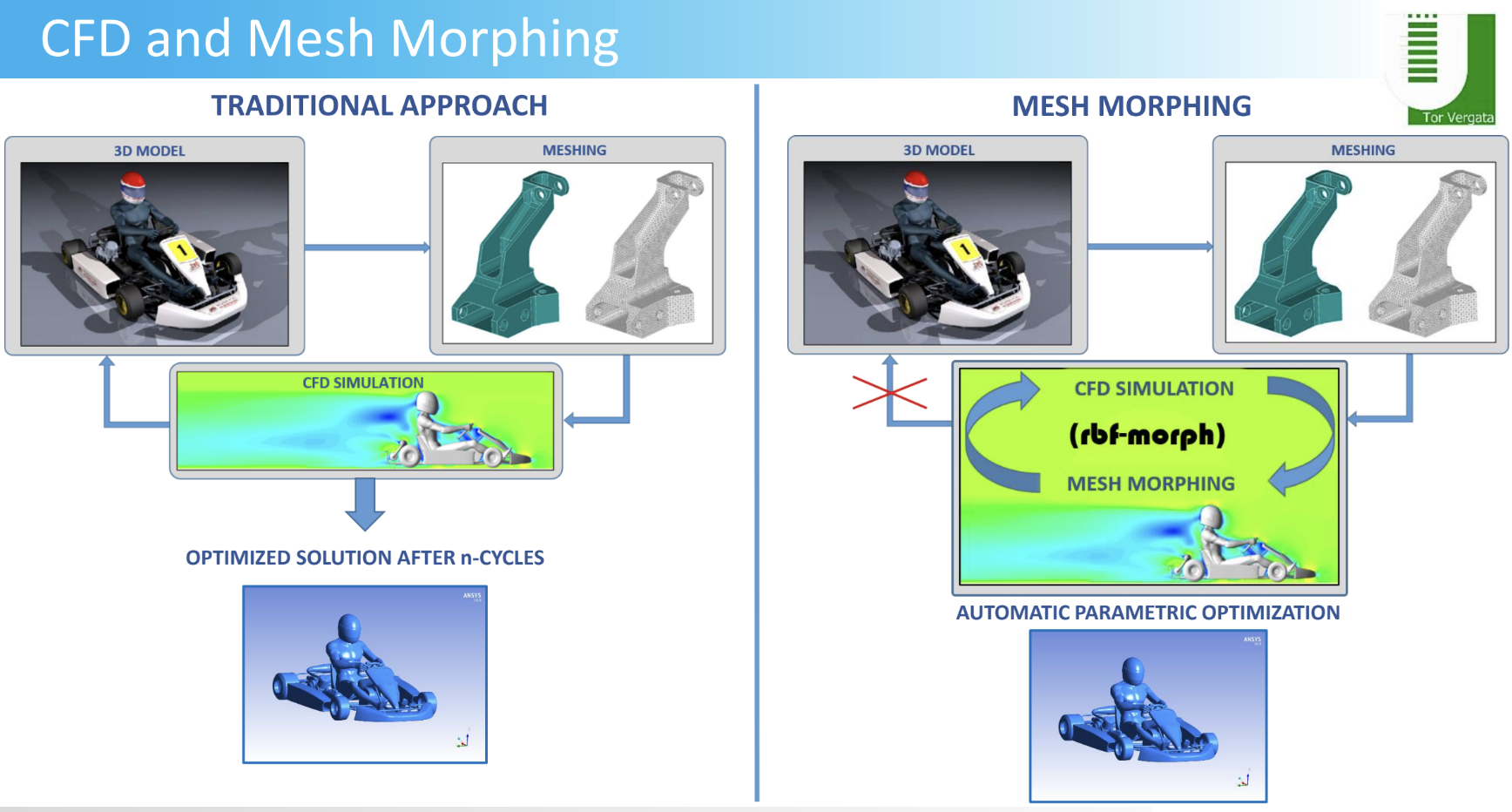We are happy to share a thesis by Carlo Del Bene and Ruben Anello from the University of Rome Tor Vergata: “Go-kart aerodynamic optimization by means of CFD and RBF Mesh Morphing.” The study introduces a novel computational approach to enhance go-kart performance by focusing on aerodynamic efficiency. Leveraging Computational Fluid Dynamics (CFD) in conjunction with Radial Basis Function (RBF) mesh morphing, the authors explore how changes in the shape of the go-kart’s bodywork and variations in driver size affect aerodynamic drag.
In their analysis, an automatic response surface optimization was employed to perform a bodywork design exploration. By morphing the mesh, they were able to simulate aerodynamic changes without the need to redesign the physical model. The results of this exploration led to a 2% improvement in drag when compared to the baseline go-kart configuration, highlighting the potential of mesh morphing techniques to achieve performance gains.
Moreover, the study delves into the effect of driver size on aerodynamic drag. Through the use of a parametric mannequin positioning workflow, they adapted the mesh to simulate different driver dimensions, demonstrating that driver size has an even more pronounced effect on drag, with variations of about 5%. This insight underscores the significance of driver posture and size in optimizing go-kart performance.
The findings of this study exemplify how advanced simulation tools, such as CFD and RBF mesh morphing, can be harnessed to fine-tune designs and achieve measurable performance improvements in motorsports.
Click to read the presentation and the thesis.



